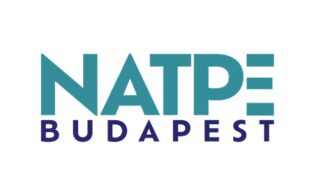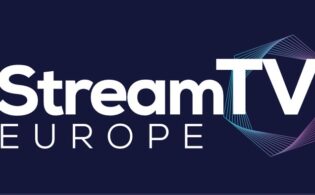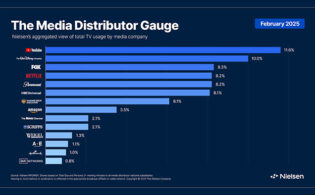Speaking to a packed Kelvin Theatre, Pedro Pina, VP for EMEA at YouTube, shared insights on how IP owners should be using the platform in conversation with Evan Shapiro at MIP London.
“My responsibility is managing a team that connects with all the content providers to YouTube,” Pina explained, “from the small kid who starts their video in their bedroom to the relationships we have with big broadcasters and producers. We’re making sure that we have a healthy ecosystem of people participating in this wonderful platform. I lead, together with a wide cross-functional team, the entire business of YouTube—the monetization of the platform, engagement with governments and regulators across the region and all the issues related to our ongoing customer engagement.”
YouTube recently revealed that more viewing is happening on the TV set in the home than on mobile. On the strategy for the living room, Pina noted, “We are committed to giving the content that people want, no matter where they are, no matter how they want it. It turns out that users want to see us on the bigger screen in their homes. With the real estate of connected TV increasing so dramatically in all the countries we operate, inevitably, this is something that comes from the users first. It’s not us sitting in our offices designing a strategy for the living room. This is not us shifting our strategy. It’s staying with the same strategy. We will give you the content that you want in whatever format and whatever device you want. We got the cues from the users, and that’s exactly what we’re delivering.”
“It does seem like it is becoming much more of a television experience than a social video experience in the home on YouTube,” Shapiro said.
“It’s the screen with the highest growth for us,” Pina noted. “It’s a shared experience.” And the SVOD experience of bingeing is also starting to happen on YouTube, Pina said.
Podcasting is picking up traction on YouTube, Pina continued, especially among the Gen Z set. Shapiro said there are 400 million hours a month of podcasts watched on YouTube on the TV. “It’s a billion hours a day of YouTube watched on TV every single day.”
Shapiro asked Pina about production values in content and what’s determined as being “premium” for viewership on the home TV. “Production value is determined by the viewer, not by who produces it.”
“The production value may not be what you’re used to from BBC or Channel 4 shows, but the content is what people are gravitating to,” Shapiro added.
Shapiro said he’s heard resistance from some broadcasters and producers about placing content on YouTube “when they’re just going to use the algorithm to out-create me and put out stuff that is better than mine. How do you come back to people who say there’s going to be cannibalization here? How do you deal with some of the pushback within the traditional television ecosystem when it comes to working on your platform?”
Pina said there are still misconceptions about YouTube. “There are a lot of fears for what it represents and does. We are an open platform. We exist to provide the ability for creators to upload the content and make it available in the country where they operate or globally if they want. It’s a massive opportunity to reach a wider audience. We have no interest whatsoever in producing our own content. We’ve tried it a little bit. We did a few experiments. We realized that as a company—Alphabet overall—we are very good at producing platforms. Look at Chrome, Search, YouTube, Android, Google TV, etc. We’re not interested in producing content. For us to be successful, we need other people to actually put the content in. Our commercial success will only exist if other people are successful with our content. Our mission is to give that content to users around the world. But we need to have it. It’s critical that whoever uses our platform is successful.”
That has been achieved through YouTube’s revenue-share model with content owners. “We take a part of this, but the majority stays with you.”
YouTube exposure “is complementary to what you do. This comes on top. We are an extension of your business.”
Channel 4 serves as a good example, Pina said. “Channel 4 continues to produce phenomenal content, does some of the best journalism I’ve ever seen, and we are providing extra reach in this country and outside the country if it’s required.”
“And extra revenue—because it’s extra reach, these are eyeballs that would not have been monetized,” Shapiro said.
Turkey, Pina said, “has been giving an MBA to everyone on how to monetize [on YouTube]. Other players should be doing exactly the same.”
In addition to extra revenues and reach, YouTube also allows you to “choose the model you want to monetize,” Pina said. “Some producers believe if they’re on YouTube, they have to go all in. You don’t. You can start with certain verticals or certain parts of your content. For certain partners that qualify according to criteria that have to do with readiness to sell digital inventory, we will allow them to keep the inventory, and you can sell it for whatever you want. Whenever you’re ready to give us the other part of the win, we are ready for you. You also get to determine the prices that you want if you want to keep some inventory under your control. When people start experimenting with this model, they’re very protective about their inventory, very passionate about pricing, and then slowly start relaxing because they realize we are just complementary to their current business.”
As for how producers should be approaching their YouTube strategies, Pina said: “Don’t be afraid. We have an open platform that works for everyone. It’s an opportunity for you to enlarge your audience but also, more importantly, to experiment and learn what the audiences want. Through YouTube analytics, you can have a clear sense of episode by episode, minute by minute, what’s attracting the viewers, and you can learn and curate and improve your production going forward. It’s a petri dish to make your commissioning evolve and be more successful in the future. YouTube brings you additional volume, reach and revenue and gives you access to the globe, despite language barriers.”






